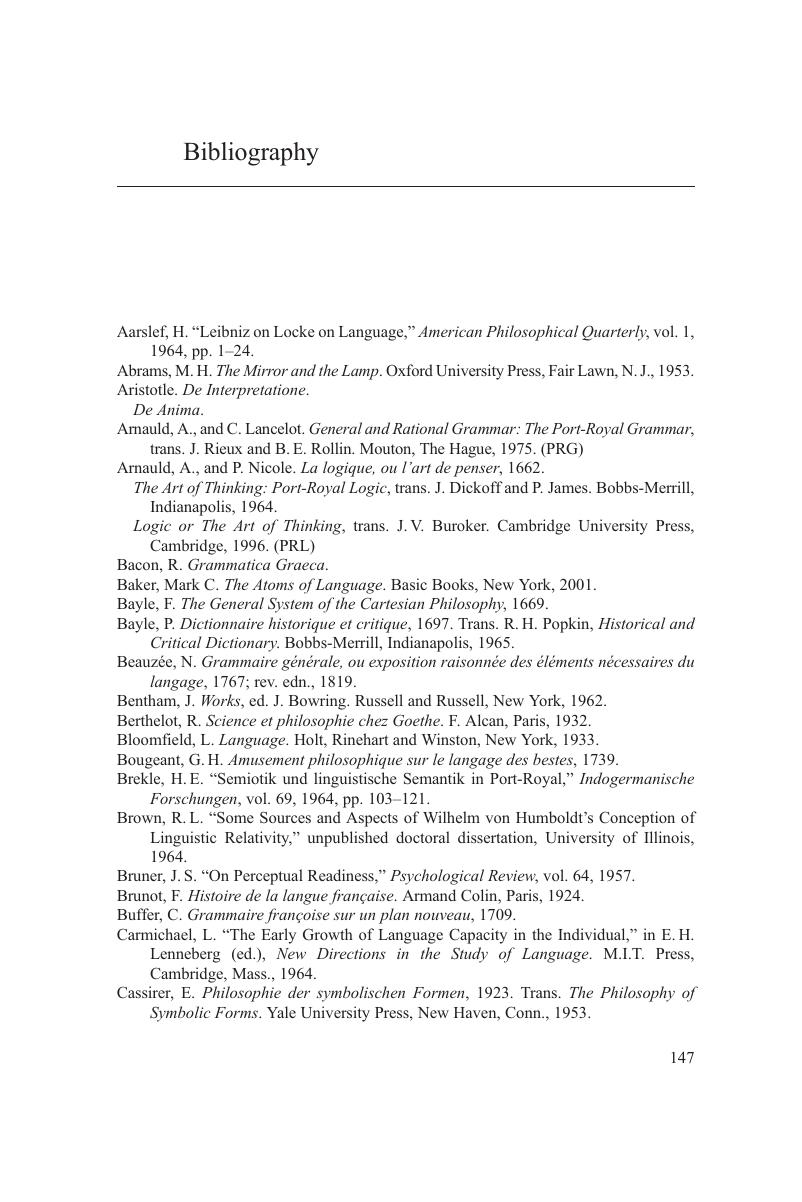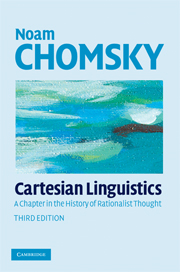Book contents
Bibliography
Published online by Cambridge University Press: 25 January 2011
Summary

- Type
- Chapter
- Information
- Cartesian LinguisticsA Chapter in the History of Rationalist Thought, pp. 147 - 153Publisher: Cambridge University PressPrint publication year: 2009



